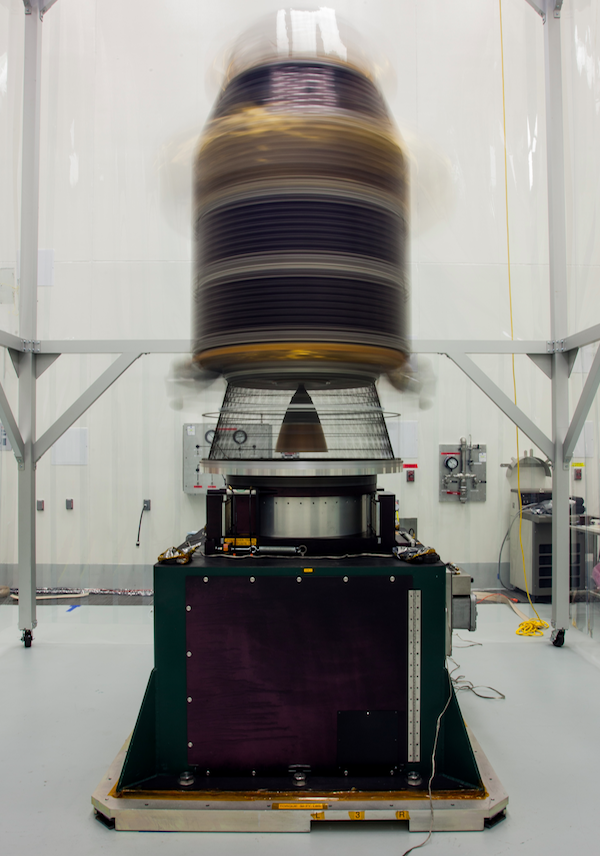This story about receiving a roll of Space-Themed Florida State commemorative quarters from the Governor of Florida mentions that the New Horizons spacecraft had to be "spin-balanced" to grams-level precision.
What exactly does this mean mathematically? What exactly is being balanced?
I understand that New Horizons has both spin-stabilized (cruise) and three-axis stabilized (science) modes controlled entirely with hydrazine monopropellant, but does spin stabilization require careful balancing? I noticed that this answer about another spacecraft also explicitly mentions the need to balance carefully.
Stern accepted the roll from the governor, but explained he could only fly one. The others would be distributed to team members as a souvenir of the mission.
Less you think however, that the quarter flew simply as a gesture to the governor, it served a bonafide purpose on the spacecraft.
"For spin balance, we need to add a number of kilograms to various places [on New Horizons]," explained Stern. "We knew this was the case because the moments of inertia of the spacecraft and the dynamical properties of it, that we would have to trim it out down to literally the grams-level with balance weights. Of course, we had a whole variety of big ones and little ones; you start off with adding a kilogram here and a kilogram there and you end up getting smaller and smaller weights in various places until you're done. We used the coins to that purpose," he said. (emphasis added)
"Since we needed a counter balance to [the Florida state quarter], we decided to fly a second state quarter. We picked Maryland because that is where the spacecraft was built. And because we had so many people back in Maryland at the Applied Physics Lab and at Goddard, it was easy for someone to ship us a quarter really quick."
below: State of Florida Commemorative Quarter to be attached to New Horizons spacecraft. Maryland state quarter was also on board, but located at a different position for balance reasons. From here.
below: A separate example: LADEE going for a test spin. Looks frightening! Cropped from LADEE Spin Test:
To make sure that the spacecraft is perfectly balanced for flight, engineers mounted it onto a spin table and rotate it at high speeds, approximately one revolution per second. The team measured any offsets during the spinning, and then added small weights to the spacecraft to balance it. Once the spacecraft was balanced dry, the team loaded the propulsion tanks with fuel, oxidizer, and pressurant. The spin testing was performed again "wet," or with fuel, in order to see if the balance changed with the full fuel tanks.
below: A separate example: Curiosity(?) going for a test spin. Looks upside down! From Space Electronics:
Two-Plane Spin Balance Machines with Moment of Inertia Capability. Measure product of inertia, dynamic unbalance, center of gravity and moment of inertia.


